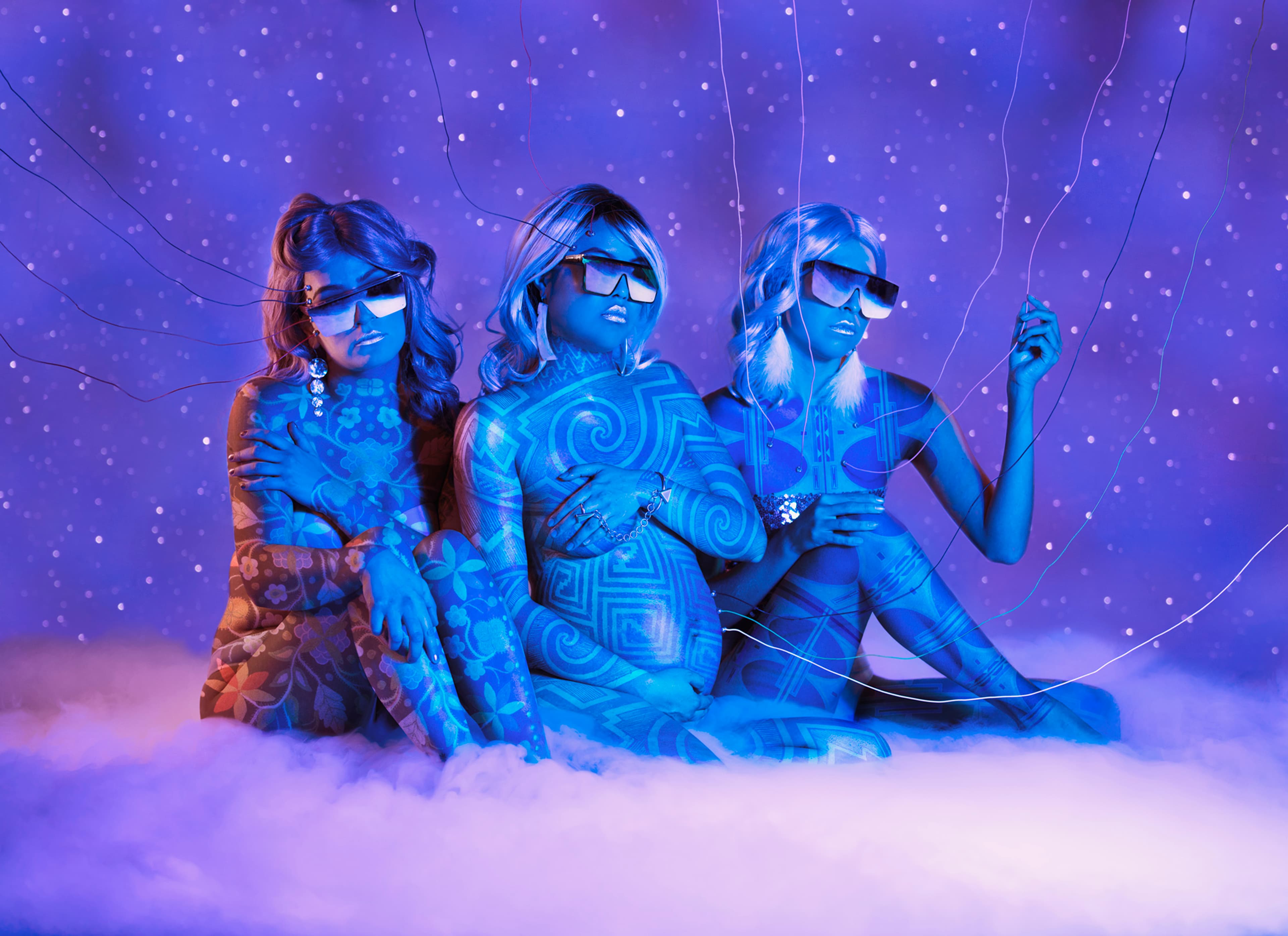
Cara and Diego Romero: Tales of Futures Past
July 14, 2025
Cara and Diego Romero blend pop culture and tradition to reimagine Indigenous identity. "Tales of Futures Past" features more than 35 works exploring history, myth, and future through photography, pottery, and print.
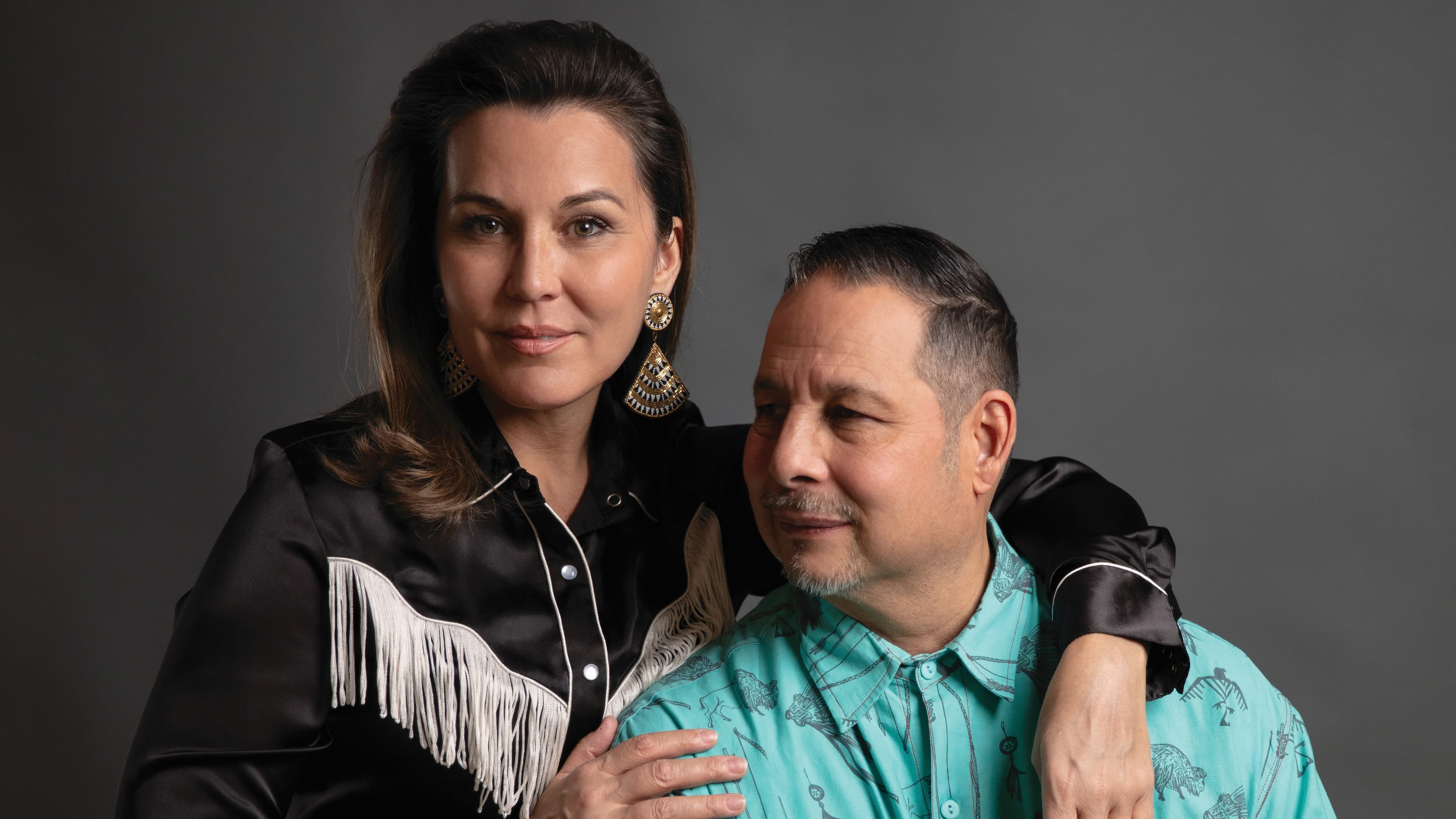
Humanity has long dreamt of, anticipated, and sought to predict and shape the future. Visions of what lies ahead are closely intertwined with the past, exerting a tangible influence on the present. This understanding of time is familiar to many Indigenous communities as cyclical rather than linear, with past events manifesting in present-day realities. Photographer Cara Romero (Chemehuevi/American, born 1977) and ceramic artist Diego Romero (Cochiti/American, born 1964) [fig. 1] use their work to tell stories of the future that are firmly grounded in history and their cultural heritage. Their artwork reimagines traditional narratives about Indigenous lifeways—spanning past, present, and future—from contemporary Indigenous perspectives. The exhibition, which includes Cara’s photographs and Diego’s pottery and lithographs, brings together approximately 35 artworks by these married artists and is the first nationally traveling exhibition to focus on the dialogue between their work.
While Cara and Diego maintain individual studio practices, their art shares common themes that fuse popular culture, ancestral traditions, and the supernatural to visualize the complexities and evolution of Indigenous identity. Born in Inglewood, California, Cara Romero is an enrolled citizen of the Chemehuevi Indian Tribe and was raised between the Chemehuevi reservation in the Mojave Desert of California and Houston, Texas. She studied art at the University of Houston and the Institute of American Indian Arts (IAIA) in Santa Fe, New Mexico, before earning her AAS in photography at Oklahoma State University.
Diego was born in Berkeley, California, to a Cochiti father and a non-Native mother. As a child, he often visited New Mexico, before relocating to the state to attend IAIA, where he studied traditional pottery techniques. After graduation, he continued his studies at Otis College of Art and Design and the University of California, Los Angeles. In an interview with Diego, Cara shared the importance of their time at IAIA, “We learned the arc of our own Native art history in a way that I don't think we would have learned anywhere else. With that strong foundation, and all the other similarities in our lives, we began to have conversations around the house that are informing the content.”[1]
In the creation of her photographs, Cara collaborates with friends and family, many of whom are practicing artists and cultural knowledge-keepers, creating images that show the strength and diversity of her community, especially of Native women and youth. Many of these images, such as 3 Sisters (2022), exist in a supernatural realm—an empowering space for those marginalized by society as they challenge misrepresentations and continuing injustice [fig. 2]. Today, Cara maintains a studio in Santa Fe, New Mexico, where she resides with Diego and their children.
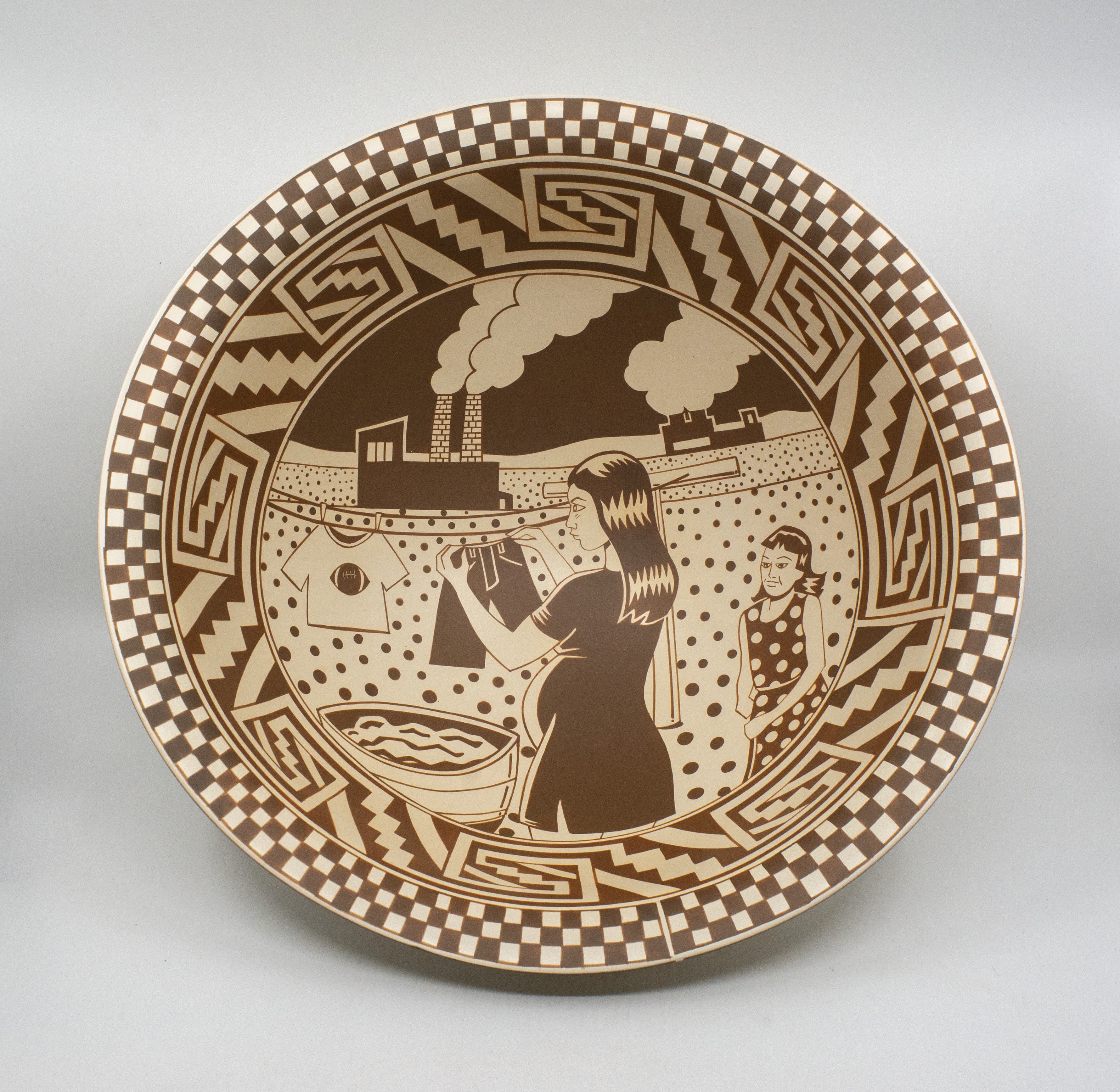
Diego’s artworks draw on the visual language of comic books, Greek amphorae, and Pueblo and Mimbres pottery. His art is often political and his pieces, such as Women in the Anthropocene (circa 2015), address issues including colonization and climate change [fig. 3]. In particular, the imagery in Diego’s pots and prints contends with the issue of environmental racism, highlighting how Native communities are disproportionately affected by the harmful environmental consequences of industrialization and development.
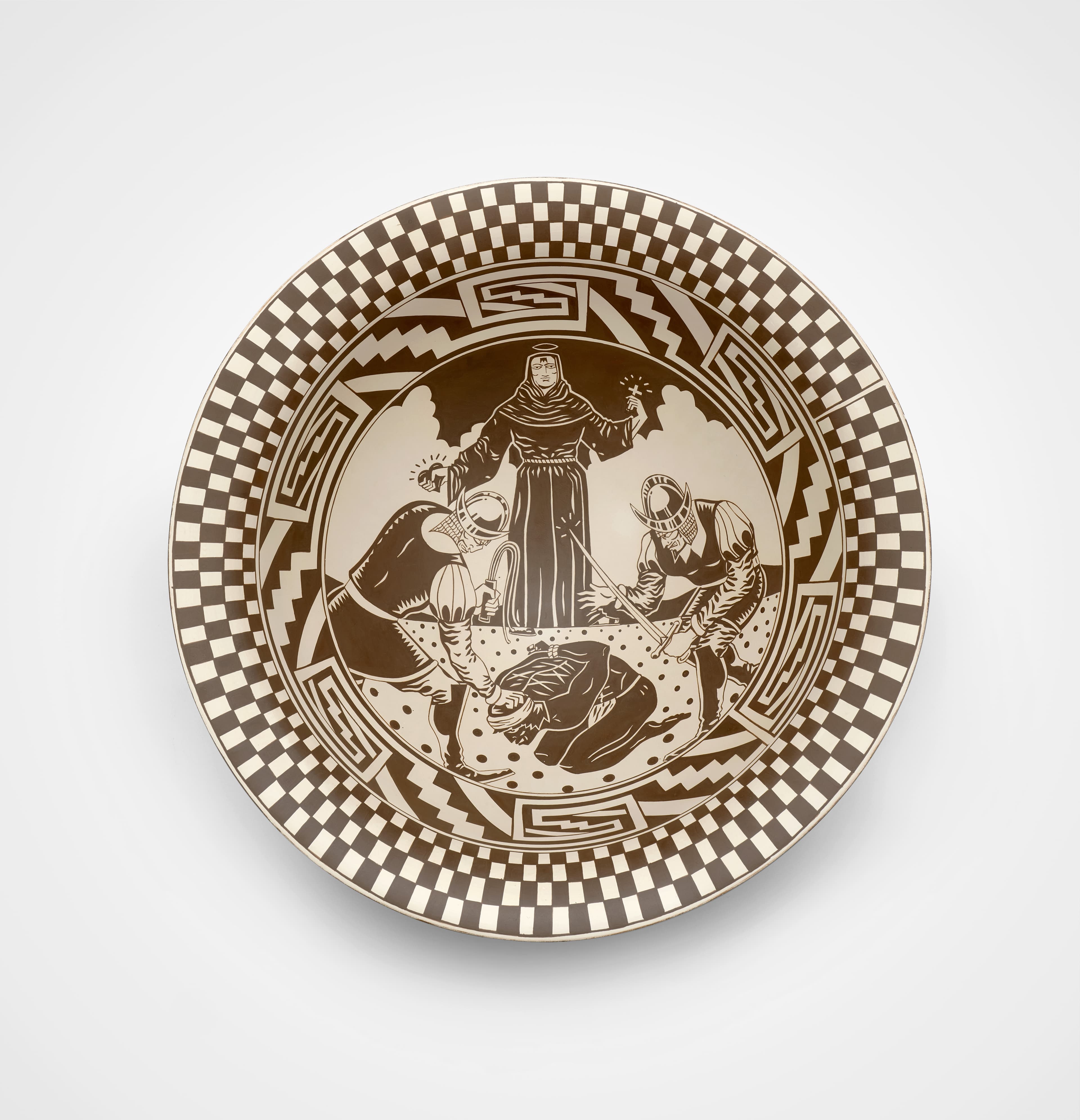
Organized thematically, Tales of Futures Past presents five sections dedicated to rewriting historical narratives, celebrating the power of Indigeneity, advocating for environmental consciousness, exploring shared mythologies, and tracing ancestral evolution. Artworks included in the first section, “Rewriting History,” for instance, address historically rooted stereotypes, myths, and images of Native people. As originating curator Vanessa Sage writes, “As artists and storytellers, Cara and Diego encourage us to move past surface stereotypes and engage with the complexity of Indigenous identity while embracing our shared humanity and envisioning collective futures.” For example, the violent confrontation between Pueblo people and Spanish colonizers depicted in Diego’s Saints & Sinners (n.d.) [fig. 4], on loan to the exhibition from the Crocker’s collection, raises questions about who truly embodies the saints and who are the sinners. At center stands a Catholic priest who does not intervene to stop the violence against a Native man, but rather permits it. The presence of the priest also makes reference to the historic outlawing of Indigenous religious practices.
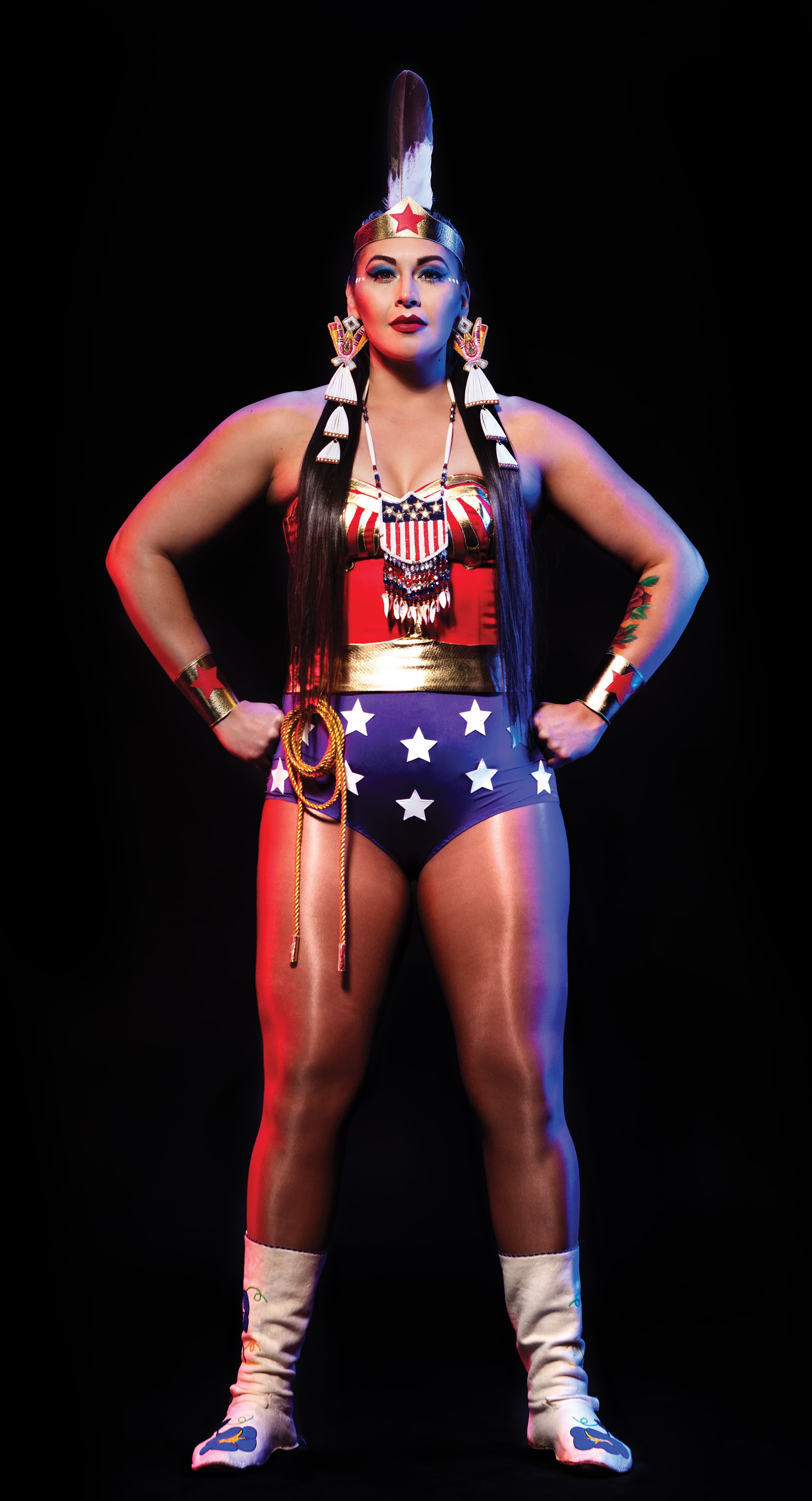
In the section “The Power of Indigeneity,” artworks visualize and celebrate the spiritual and cultural vitality of contemporary Native culture and include references to popular culture. In this section is Cara’s image Arla Lucia (2020) [fig. 5] of an indigenized Wonder Woman—a member of a fictional Amazonian warrior tribe. There is no mistaking the Native woman’s red-striped bustier, blue shorts with white stars, golden tiara, bracelets, and magical lasso as a reinterpretation of the iconic superhero. Cara has put her own spin on the costume, adding moccasins, a beaded panel shaped like a shield, quillwork earrings by artist Jamie Okuma (Luiseño/Shoshone-Bannock), and a feather in the tiara. The work’s title is a blend of the model’s name, Arla Marquez (Seneca-Cayuga, Shoshone-Bannock, and Blackfoot), and Lucia, a name associated with brightness and the qualities of light. Like Arla Lucia, other artworks in this section spotlight Native women.
The “Shared Mythos” section highlights the significance of storytelling for both artists. For instance, Cara and Diego reference mythological figures, such as the trickster Coyote, and incorporate them into contemporary imagery. The industrial settings depicted in the exhibition’s subsequent section, “Apocalypto,” serve as a powerful commentary on the enduring effects of colonization, resource extraction, and climate change.
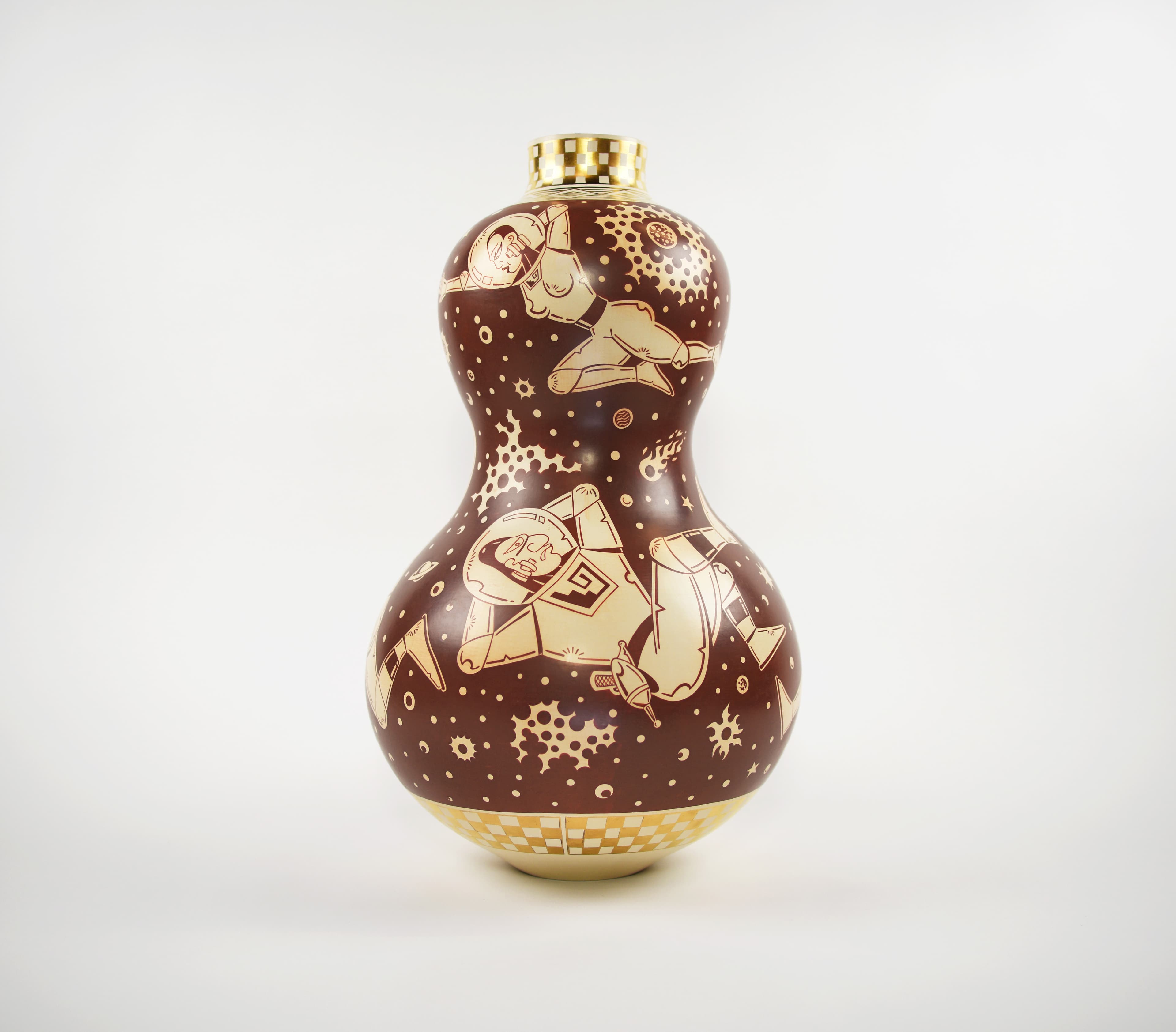
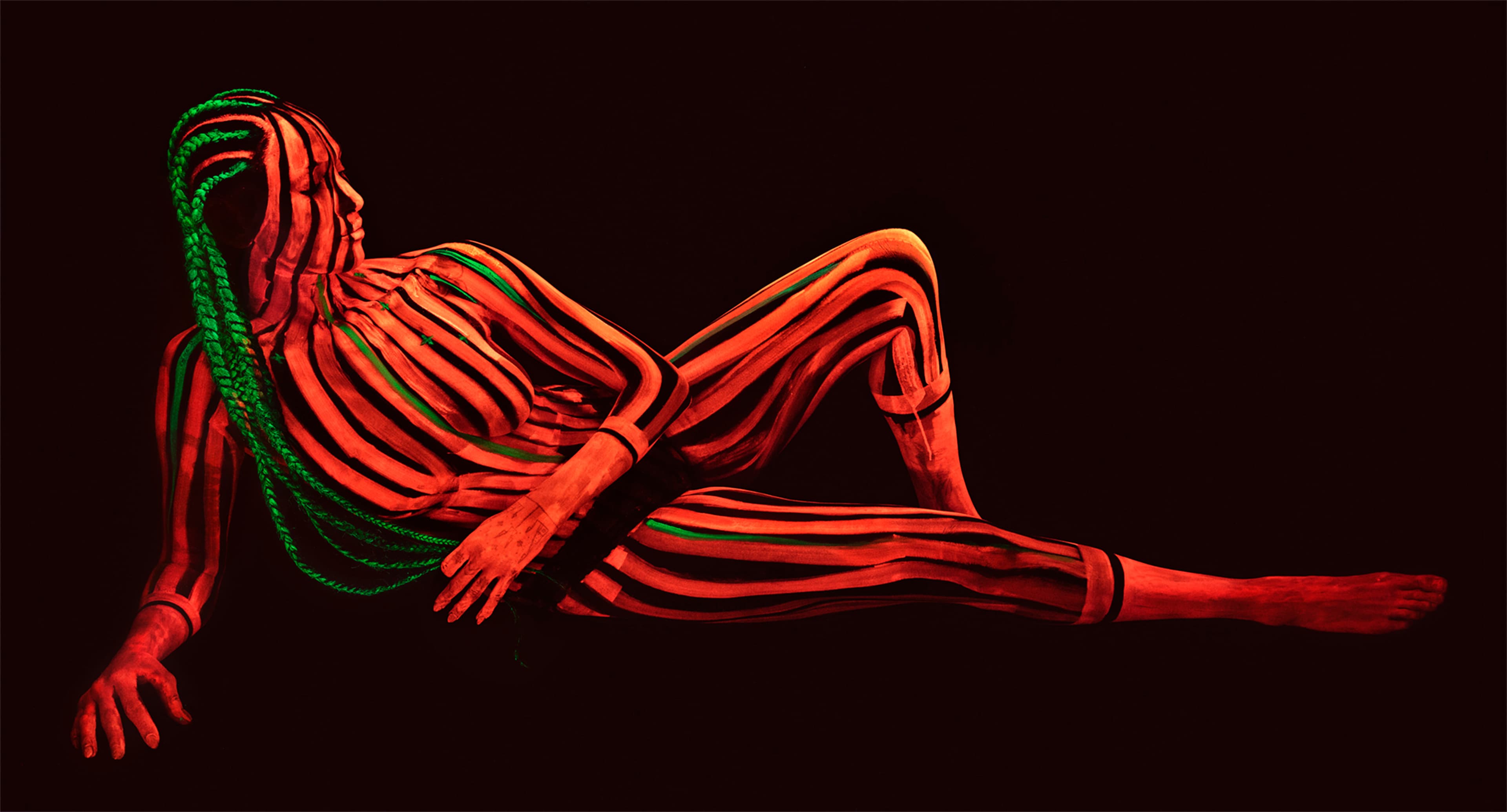
The final section, “Ancestral Evolution,” includes works that envision alternate dimensions and futures that transcend conventional boundaries of time and space. Indigenous astronauts wrap around the surface of Diego’s Mayanauts (2022) [fig. 6] as they appear to journey through the cosmos beyond traditional constraints. In Cara’s image Alika II (2024) [fig. 7], she directly references album covers from the hip-hop group A Tribe Called Quest by depicting a female figure, often referred to as “Bonita,” painted in fluorescent red and green stripes. Cara’s interpretation is a collaboration with writer-director Alika Sheyahshe-Mteuzi (Albkebu-Ian/ Africa, Kadohadacho/Caddo, Cheyenne, and Arapaho). By drawing on pop culture references, Cara’s version centers Afro-Indigenous culture, blending these influences into a powerful futuristic narrative that shows the multiplicity of Indigenous identity.
While Tales of Futures Past provides space for reflection on each artist’s individual accomplishments, it also highlights the powerful artistic synergy between the two, underscoring the storytelling potential of collaboration and partnership. Reflecting on his relationship with Cara and its influence on their art, Diego explains, “We came to the relationship with a similar perspective and a sense of responsibility to use this gift that was given to us to educate, broaden people’s perspectives, and to raise questions.”[2] Whether drawing on the past, present, future, or everywhen all at once, both artists continue to create work that honors their cultural heritage and lived experiences, while also addressing pressing social and environmental issues.
[1] Cara Romero, interview by Vanessa Sage, November 18, 2024.
[2] Diego Romero, interview by Vanessa Sage, November 18, 2024.


Tales of Futures Past was organized by the Figge Art Museum in Davenport, Iowa, and will embark on a national tour to four venues. This exhibition is made possible in part through the generous support of the Carl & Marilynn Thoma Foundation. The exhibition was curated by Vanessa Sage.